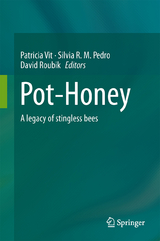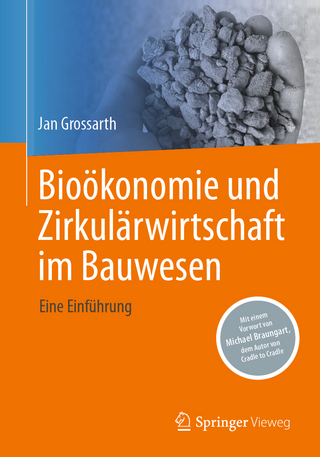Pot-Honey
Springer-Verlag New York Inc.
978-1-4614-4959-1 (ISBN)
The stingless bees are one of the most diverse, attractive, fascinating, conspicuous and useful of all the insect groups of the tropical world. This is a formidable and contentious claim but I believe it can be backed up. They are fifty times more species rich than the honey bees, the other tribe of highly eusocial bees. They are ubiquitous in the tropics and thrive in tropical cities. In rural areas, they nest in a diversity of sites and are found on the flowers of a broad diversity of crop plants. Their role in natural systems is barely studied but they almost certainly deserve that hallowed title of keystone species. They are popular with the general public and are greatly appreciated in zoos and gardens. The chapters of this book provide abundant further evidence of the ecological and economic importance of stingless bees.
Foreword.- Introduction.- I. Origin, biodiversity and behavior of the stingless bees (Meliponini).- 1. The Meliponini.- 2. Historical biogeography of the Meliponini (Hymenoptera, Apidae, Apinae) of the Neotropical region.- 3. Australian stingless bees.- 4. Stingless bees from Venezuela.- 5. Stingless bees (Hymenoptera: Apoidea: Meliponini) of French Guiana.- 6. Stingless bees of Guatemala.- 7. Stingless bees of Costa Rica.- 8. Stingless bees in Argentina.- 9. Mexican stingless bees (Hymenoptera: Apidae): Diversity, biogeography, and indigenous knowledge.- 10. The role of useful microorganisms to stingless bees and to stingless bee keeping.- 11. Microorganisms associated with stingless bees.- 12. Stingless bee food location communication: from the flowers to the honey pots.- 13. On competition and the diversity of food-collection strategies in stingless bees.- II. Stingless bees in culture, traditions and environment.- 14. Stingless bees: An historical perspective. 15. Medicinal uses of Melipona beecheii pot-honey, by the ancient Maya.- 16. Hans Staden’s first report from 1557 on collection of stingless bee honey by an indigenous tribe in Brazil.- 17. The Melipona bee in the scientific world: Western cultural views.- 18. Taxonomy as a tool for conservation of African stingless bees and their honey.- 19. Effects of human disturbance and habitat fragmentation on stingless bees.- III. What plants are used by the stingless bees?.- 20. Palynology serving the stingless bees.- 21. How to be a bee botanist using pollen spectra.- 22. Plants used by stingless bees for nesting and as floral resources.- 23. Botanical origin of pot-honey Tetragonisca angustula Latreille in Colombia.- IV. Sensory attributes and composition of pot-honey.- 24. Sensory evaluation of pot-honey.- 25. Melipona favosa pot-honey fromVenezuela.- 26. Tetragonisca angustula pot-honey compared to Apis mellifera honey from Brazil.- 27. Honey of Colombian native bees.- 28. The pot-honey of Guatemalanstingless bees.- 29. Pot-honey of six species of Meliponini from Amboró National Park in Bolivia.- 30. Electronic nose and physicochemical analysis to differentiate Colombian pot-honey.- 31. Nuclear Magnetic Resonance as a method for molecular profiling and prediction of geographical and entomological origin of pot-honey.- 32. Non-aromatic organic acids of honeys.- V. Biological properties.- 33. Flavonoids in stingless-bee and honey-bee honeys.- 34. Antioxidant activity of pot-honey.- 35. Use of honey in cancer prevention and therapy.- 36. Bioactivity of honey and propolis from Tetragonula laeviceps in Thailand.- 37. Costa Rican pot- honey: Its medicinal use and antibacterial effect.- 38. Immunological properties of bee products.- 39. Chemical properties of propolis collected by stingless bees.- VI. Marketing and standards of pot-honey.- 40. Production and marketing of pot-honey.- Appendix.- 1. Taxonomic index of bee species.- 2. List of bee taxa.- 3. Common names of stingless bees.- 4. Taxonomic index of plant families.- 5. List of plant taxa used by bees.- 6. Common names of plants used for nesting by stingless bees.- 7. Common names of medicinal plants used with honey by Mayas.- 8. Microorganisms associated to stingless bees or used to test antimicrobial activity.- 9. Summary of meliponine and Apis mellifera honey composition.- 10. Information of collected stingless bees.- Subject list.- Authors list.
| Zusatzinfo | XXVIII, 654 p. |
|---|---|
| Verlagsort | New York, NY |
| Sprache | englisch |
| Maße | 155 x 235 mm |
| Themenwelt | Naturwissenschaften ► Biologie ► Ökologie / Naturschutz |
| Naturwissenschaften ► Biologie ► Zoologie | |
| Technik ► Lebensmitteltechnologie | |
| ISBN-10 | 1-4614-4959-6 / 1461449596 |
| ISBN-13 | 978-1-4614-4959-1 / 9781461449591 |
| Zustand | Neuware |
| Haben Sie eine Frage zum Produkt? |
aus dem Bereich




